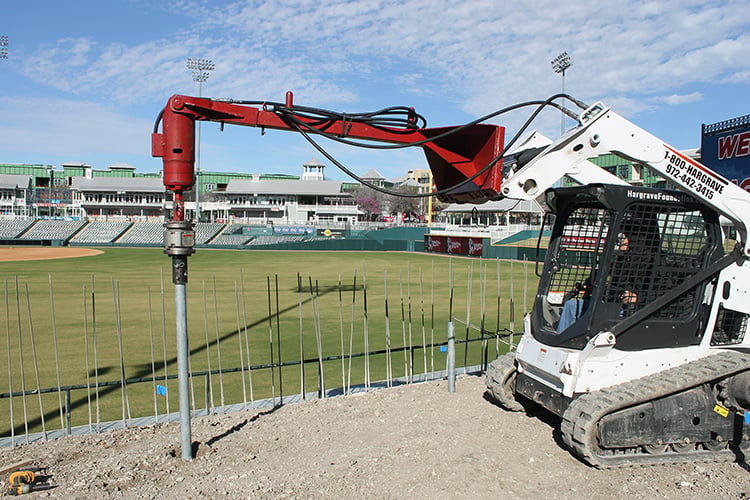On many construction projects, soil borings are not completed due to the property owner wanting to reduce costs or, quite simply, being unaware of the need to obtain soil strength data for foundation design. During the installation of CHANCE® Helical piles, monitoring torque can provide real time data defining underlying soil strength and its load capacity. As a helical pile is installed (screwed) into increasingly denser/harder soil, the resistance to installation (called installation energy or torque) will increase. The higher the torque, the higher the axial capacity. In most projects, the installation torque increases with depth, and the capacity of CHANCE helical piles can be determined at the time of installation. Regardless of whether the pile is being installed in clay or sand soil, the torque to correlation factor (Kt) for each shaft size, is multiplied by the effective installation torque (T), resulting in the ultimate capacity for each pile. The standard equation for ultimate capacity is Kt * T. The torque correlation factors for CHANCE helical piles can be found in the CHANCE Technical Design Manual. The effective torque is the average torque taken over the last 3 feet of installed depth, measured in 1 foot increments.
In some instances where dense material such as limestone is encountered, the CHANCE ROCK-IT lead section can prove beneficial in penetrating these layers and enabling the helical pile to lock into dense material. A carbide tip located on the pilot point below the first helix is designed to fracture these dense layers without pre-drilling. With the rotation of the helical pile along with the downward thrust generated by the machine during installation, the ROCK-IT provides a greater chance of locking into these layers and generating torque, which in turn, justifies using the standard equation Kt * T for deriving ultimate capacity.
In those instances where rock cannot be penetrated using a standard helical pile and ROCK-IT lead section, the pile will spin out (stop advancing) and the installation torque will be drastically reduced. In this instance, it is often recommended that the compressive strength of the rock is multiplied by the projected area of the bottom-most helix to derive a theoretical capacity. The final recommended step to ensure that the pile will hold the required capacity is to perform a full-scale load test. Please refer to the CHANCE Technical Design Manual-4th Edition, Appendix B.

